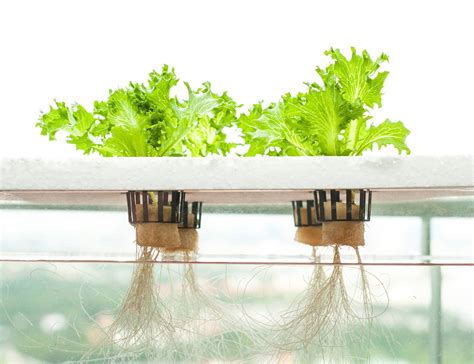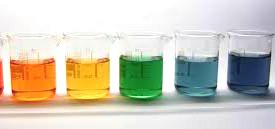Different Types Of Hydroponic Systems
Librar

How to maintain a hydroponic system
With a little experience you can enjoy fresh herbs, vegetables and flowers year-round.
Our hydroponics systems come in a range of sizes. From shelf size and room size to entire greenhouses, every system we offer can be purchased as a complete ready to grow kit, or as a basic, bare bones kit.

There are 6 main types of hydroponic system. Meanwhile, the plant roots need 3 things, water/moisture, nutrients, and oxygen. So, what differs in the 6 methods is the way the systems deliver these 3 important things to plant roots.
Of course, there are lots of variations with different names but they all boil down to these 6 core types of Hydroponic systems.
Hydroponic systems can be either active or passive. Active means that nutrient solutions will be moved, usually by a pump. Passive relies on a wick or the anchor of the growing media.
Hydroponic systems are also characterized as recovery or non-recovery. Recovery means the nutrient solution will be reused into the system. Meanwhile, with non-recovery, the nutrient solution is applied to the growing media, and vanish.

The ebb and flow system works by temporarily flooding the grow tray with nutrient solution and then draining the solution back into the reservoir. This action is normally done with a submerged pump that is connected to a timer.
When the timer turns the pump on, the nutrient solution is pumped into the grow tray. When the timer shuts the pump off, the nutrient solution flows back into the reservoir. The timer is set to come on several times a day, depending on the size and type of plants, temperature and humidity, and the type of growing medium used.
The ebb and flow method provides a versatile system that can be used with a variety of growing mediums. The entire grow tray can be filled with clay pebbles, gravel or granular Rockwool. Many people like to use individual pots filled with a suitable growing medium. This makes it easier to move plants around or even move them in or out of the system. Plus, the growing medium retains moisture, making plant growth more efficient.

Drip systems are probably the most widely used type of hydroponics system in the world. Operation is simple; firstly a timer controls a submersed pump, then the timer turns the pump on and nutrient solution is dripped onto the base of each plant by a small drip line. In a recovery drip system, the excess nutrient solution that runs off is collected back in the reservoir for re-use. The non-recovery system does not collect the runoff.
A recovery system (recirculating) uses nutrient solutions a little more efficiently. As excess solution is reused, it allows for the use of a more inexpensive timer because the recovery system doesn't require precise control of the watering cycles. The non-recovery system needs to have a more precise timer so that watering cycles can be adjusted to ensure that the plants get enough nutrient solution and that runoff is kept to a minimum. However, a recovery system can cause large shifts in the pH and nutrient strength levels that require periodic checking and adjusting.
The non-recovery system (run off) requires less maintenance because the excess nutrient solution isn't recycled back into the reservoir. In this
system, the nutrient strength and pH of the reservoir will not vary. This means that you can fill the reservoir with pH-adjusted nutrient solution and
then put your feet up until you need to mix.

Deep Water Culture
Also Serving the Melbourne Area
Also Serving the Melbourne Area
Drip Systems
Drip systems are probably the most widely used type of hydroponics system in the world. Operation is simple; firstly a timer controls a submersed
pump, then the timer turns the pump on and nutrient solution is dripped onto the base of each plant by a small drip line. In a recovery drip system,
the excess nutrient solution that runs off is collected back in the reservoir for re-use. The non-recovery system does not collect the runoff.
 A recovery system (recirculating) uses nutrient solutions a little more efficiently. As excess solution is reused, it allows for the use of a more
A recovery system (recirculating) uses nutrient solutions a little more efficiently. As excess solution is reused, it allows for the use of a more
inexpensive timer because the recovery system doesn't require precise control of the watering cycles. The non-recovery system needs to have
a more precise timer so that watering cycles can be adjusted to ensure that the plants get enough nutrient solution and that runoff is kept to
a minimum. However, a recovery system can cause large shifts in the pH and nutrient strength levels that require periodic checking and adjusting.
The non-recovery system (run off) requires less maintenance because the excess nutrient solution isn't recycled back into the reservoir. In this
system, the nutrient strength and pH of the reservoir will not vary. This means that you can fill the reservoir with pH-adjusted nutrient solutionand then put your feet up until you need to mix
Hydroponics is the method of growing plants without soil, offering a more efficient way to provide water and nutrients to your plants. Soil provides nutrients that must be broken down into a useable form and serves to anchor a plant's roots. Hydroponics, on the other hand, uses a wet growing medium and a specially prepared nutrient solution that is readily available to the plant.
In soil, plants must grow a large root system to find food and water. In hydroponics, food and water are transported directly to the roots. This enables the plant to spend more energy growing above the surface, producing more vegetation, larger fruit, flowers, and vegetables.
Plants grown in hydroponic systems grow up to two times faster and with larger yields than with conventional soil gardening methods. This is due to the high oxygen levels available to the root system, optimum pH levels for increased nutrients and water uptake, and balanced, high-grade nutrient solutions.
Because hydroponics root systems are compact in size, plants may be grown closer together. Add to this the fact that there is no weeding, fewer pests and lower water requirements. It’s easy to see why home hobbyists, schools, and research institutes, as well as commercial growers around the world, use hydroponics.
Hydroponic gardens can be used anywhere as long as sufficient light is provided with ample ventilation. Outdoors, much of the work associated with conventional gardening can be eliminated. With the addition of proper growing lights, you need not be limited to seasons.